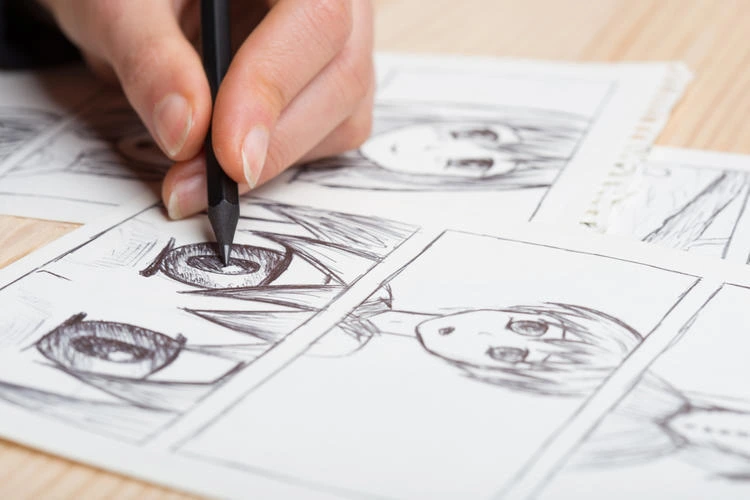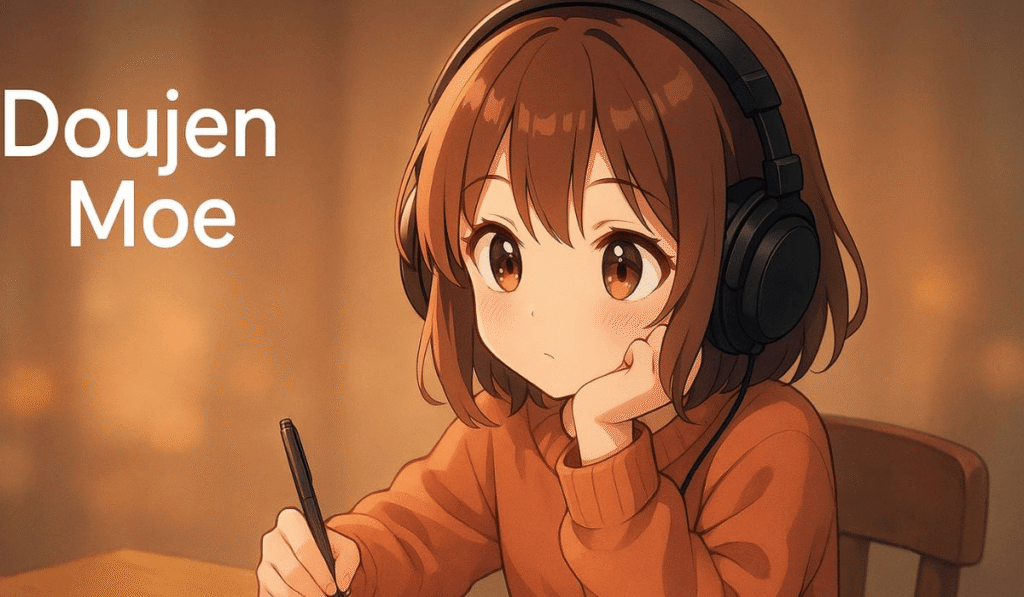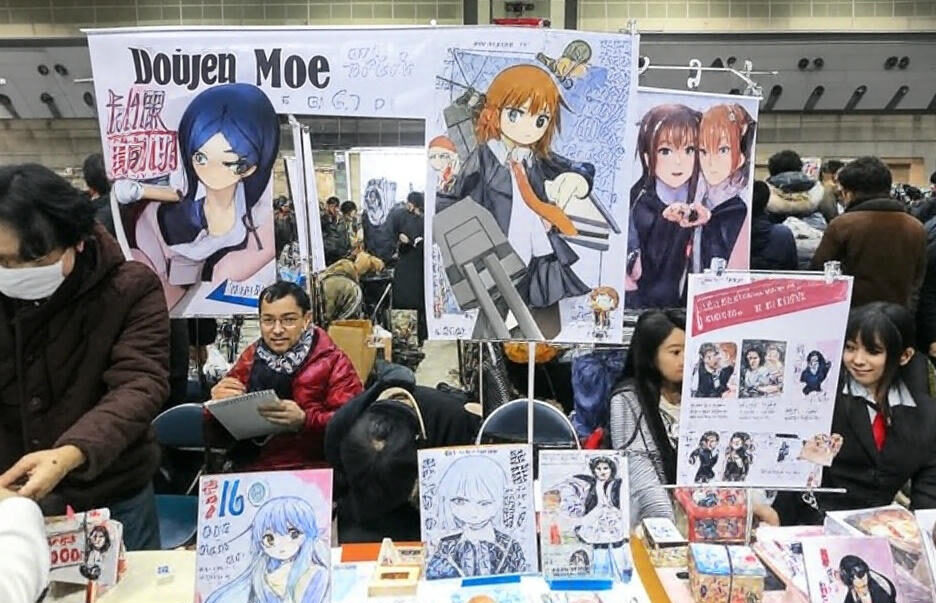One phrase that has captured the imagination of fans is doujen moe. This term merges two core concepts from Japanese fan culture: “doujinshi,” which are self-published, fan-made works, and “moe,” the overwhelming feeling of affection and adoration for fictional characters.
This article will explore the world of doujen, from its origins in Japanese fandom to its growing influence in the U.S. and beyond. We will break down its unique artistic styles, its cultural significance, and the community that drives it. You will learn what separates this trend from traditional fan art and why it has become such a powerful form of expression for creators and fans alike.
Table of Contents
Breaking Down the Term: Doujin + Moe
To fully grasp the concept, it’s essential to understand its two components. The term doujen moe is a fusion of two powerful forces in fan culture.
- Doujin (or Doujinshi): This refers to self-published creative works, including manga, novels, art books, and even games. Originating in Japan, doujin culture provides a platform for amateur and independent creators to share stories that exist outside of mainstream publishing. These works can be original or based on existing franchises, offering alternate timelines, new pairings, or deeper explorations of beloved characters.
- Moe: This is a Japanese slang term that describes a deep, affectionate, and often protective feeling toward fictional characters. A character who inspires “moe” is typically cute, innocent, vulnerable, or endearing in a way that resonates emotionally with the audience. It’s that heart-warming sensation that makes you want to protect a character at all costs.
When combined, doujen moe (or douj moe) refers to fan-made content that specifically aims to evoke that feeling of moe. These are works designed to celebrate the charm, cuteness, and emotional appeal of characters through heartfelt storytelling and distinct visual styles.

The Origins and Rise of a Fandom Trend
The roots are deeply embedded in the history of Japanese doujinshi culture, which began gaining traction in the 1970s. Conventions like Comiket in Tokyo became massive hubs for independent creators to sell their fan-made manga. This environment fostered immense creativity, allowing artists to experiment with ideas that official publishers might deem too niche.
The concept of “moe” became a prominent part of otaku (dedicated fan) vocabulary in the 1990s and early 2000s. As anime featuring cute and endearing characters grew in popularity, fans naturally wanted to create content centered on them. Doujin artists began to focus less on plot-heavy narratives and more on creating heartwarming or emotionally tender scenarios that amplified the moe characteristics of their subjects.
The trend’s explosion in the 2020s can be attributed to several factors:
- Digital Platforms: Websites like Pixiv, Booth, and even social media platforms like X (formerly Twitter) and TikTok have made it easier than ever for artists to share their work with a global audience.
- Globalization of Fandom: Real-time translation tools and international fan communities have broken down language barriers. Trends that start in Japan can now spread to the douj moe us community and other Western circles almost instantly.
- Nostalgia: Many millennial and Gen Z fans who grew up with the moe anime of the early 2000s are now creators themselves. They are revisiting these aesthetics, blending them with modern artistic sensibilities to create a new wave of doujen content.
Artistic Styles and Emotional Themes
It is defined by its distinct artistic and thematic focus. While styles can vary from artist to artist, certain commonalities create a recognizable aesthetic.
Visual Characteristics
The art is crafted to maximize cuteness and emotional expression.
- Soft and Round Features: Characters are often drawn with softer lines, rounder faces, and large, expressive eyes that convey innocence or vulnerability.
- Pastel Color Palettes: Colors tend to be gentle and warm, using pastels and light shading to create a cozy and inviting atmosphere.
- Focus on Expressions: The art emphasizes subtle emotional cues like blushing, shy smiles, or longing gazes. These “moe moments” are the core of the artwork’s appeal.
- Whimsical and Cozy Settings: Backgrounds are often minimalistic or depict comfortable settings that enhance the heartwarming mood.
Common Thematic Elements
Unlike mainstream stories that might focus on action or complex plots, it prioritizes emotional resonance.
- Slice-of-Life Scenarios: Many works place characters in everyday situations, exploring their relationships in a low-stakes, comforting environment.
- Heartwarming Relationships: The focus is often on wholesome friendships, budding romances, or tender family-like bonds.
- Emotional Vulnerability: Creators explore the softer side of characters, showcasing moments of shyness, innocence, or personal growth that make them more relatable and endearing.
The goal is not to create drama but to provide a sense of emotional comfort and connection for the audience.

Doujen Moe vs. Traditional Doujinshi: A Comparison
While all doujen moe is a form of doujinshi, not all doujinshi falls under its umbrella. Doujinshi is a broad category that includes every genre imaginable, from action and horror to comedy and parody. It is a specific subgenre with a clear focus.
Here is a table comparing the two:
| Feature | Traditional Doujinshi | Doujen Moe |
|---|---|---|
| Primary Goal | Narrative exploration, parody, or extending existing stories across any genre. | To evoke feelings of “moe” (affection, cuteness, and emotional warmth). |
| Common Genres | Can be anything: action, drama, romance, horror, comedy, etc. | Primarily slice-of-life, romance, and heartwarming or “fluff” content. |
| Artistic Style | Varies widely, can be gritty, realistic, or stylized to match any genre. | Tends toward soft lines, pastel colors, and large, expressive eyes. |
| Tone | Can range from serious and dark to lighthearted and humorous. | Overwhelmingly positive, sweet, and emotionally gentle. |
| Character Focus | Can explore any aspect of a character, including their flaws or darker traits. | Focuses on a character’s endearing qualities, innocence, and vulnerability. |
The Role of Community and Digital Platforms
It is more than just an art style; it’s a community-driven phenomenon. Fandom is about connection, and this trend provides a space for like-minded individuals to share their passion.
Online platforms are the lifeblood of the modern doujen moe movement.
- Art-Sharing Sites: Pixiv is the primary hub for Japanese and international artists to post its illustrations and comics. Other sites like DeviantArt and ArtStation also host this type of content.
- Social Media: Hashtags like #doujenmoe or #moeart on platforms like X, Instagram, and TikTok allow trends to spread rapidly and help fans discover new artists.
- Community Hubs: Discord servers and Reddit communities (subreddits) dedicated to specific anime or character pairings are popular places for fans to share and discuss its works.
- Creator Support Platforms: Sites like Booth.pm, Patreon, and Gumroad allow fans to support creators directly by purchasing digital or physical goods, such as art books, prints, and charms.
The rise of the douj moe us scene shows how these digital connections have fostered a global community. American and European artists now participate in this trend, creating fan art of both Japanese and Western media characters in the doujen moe style. This cross-cultural exchange enriches the genre and introduces it to new audiences.
The Cultural Significance
In a media landscape often saturated with fast-paced, high-stakes content, it offers a form of emotional refuge. It stands as a counter-movement that values softness, introspection, and emotional connection.
Its significance can be seen in several ways:
- Emotional Expression: It provides a creative outlet for both artists and fans to engage with their favorite characters on a deeper emotional level.
- Resistance to Commercialism: As a grassroots, fan-driven movement, it prioritizes authentic passion over commercial appeal.
- Inclusivity: The focus on emotion rather than technical perfection makes it an accessible space for artists of all skill levels.
- Influence on Mainstream Media: The popularity of certain fan-driven tropes and aesthetics can subtly influence official content, as creators recognize what resonates most deeply with their audience.
It is a testament to the power of fan creativity. It demonstrates a collective desire for content that is not just entertaining, but also emotionally nurturing. As long as fans continue to form deep connections with fictional characters, this heartfelt trend will continue to thrive and evolve.
Frequently Asked Questions (FAQs)
1. What does doujen moe mean?
It is a term for fan-made art and stories (“doujinshi”) that are created with the specific goal of being “moe”—cute, endearing, and emotionally appealing. It focuses on heartwarming depictions of characters.
2. Is doujen moe only for Japanese anime characters?
No. While the term originates from Japanese fan culture, it has been adopted globally. Fans in the U.S. and other countries create doujen moe style art for characters from Western cartoons, video games, and movies.
3. How is doujen moe different from just “cute fan art”?
The distinction lies in the cultural context and intent. “Moe” is a specific type of affection that often includes a feeling of protectiveness. Doujen moe is intentionally designed to trigger this specific emotional response, often using established visual cues and thematic elements from Japanese fan culture.
4. Where can I find doujen moe content?
Popular platforms include the Japanese art site Pixiv, social media sites like X (Twitter) and Instagram (using hashtags like #doujenmoe), and community forums like Reddit. Many artists also sell their work through online marketplaces like Booth.pm and Gumroad.
5. Is it difficult to create doujen moe art?
Not at all! The doujen moe community is very welcoming to creators of all skill levels. The focus is on expressing genuine affection for the characters, not on achieving technical perfection. Anyone with a passion for a character can try their hand at creating it.
6. Is douj moe a popular trend in the US?
Yes, the douj moe us community is growing rapidly. Thanks to the internet, American fans and artists are actively participating in the trend, both as consumers and creators. You can find many U.S.-based artists adopting this style and selling their work at anime conventions and online.

Leave a Reply to Zoswerheoi: The Future of Innovation – Infonest Cancel reply